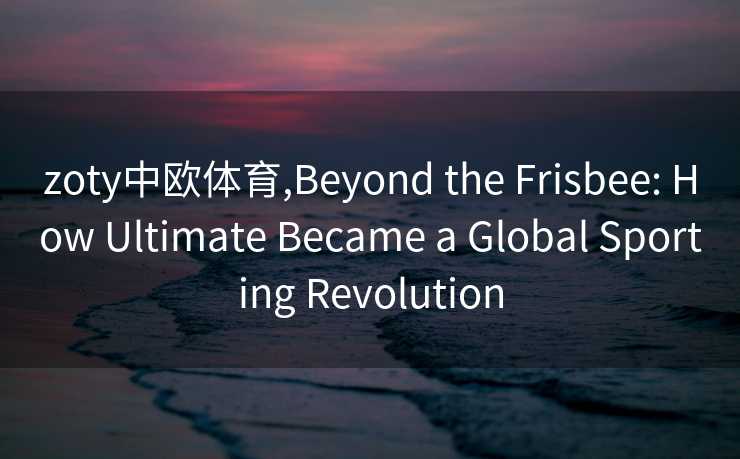When most people hear “frisbee,” they picture casual backyard games or beach outings. But for millions worldwide, it’s more than a toy—it’s Ultimate, a dynamic team sport blending speed, strategy, and sportsmanship. Born in 1968 at Columbia University, Ultimate has transcended its humble origins to become one of the fastest-growing global sports, driven by its unique ethos and inclusive community.

From Playground Toy to Competitive Sport
The story begins with Fred Morrison, who patented the plastic disc in 1950s California. By the 1960s, college students like Joel Silver adapted it into a competitive game, coining the name “Ultimate.” Unlike traditional sports, Ultimate has no referees; players self-officiate using the “Spirit of the Game”—a code emphasizing fairness, respect, and fun over winning at all costs. This philosophy is core to its appeal: whether on a muddy field or a polished stadium, athletes police fouls, resolve disputes, and celebrate opponents’ skills.
Rules That Balance Chaos and Strategy
Ultimate’s simplicity belies its complexity. Teams of seven compete on a rectangular field (similar to soccer) with end zones. The disc is passed between teammates; if it touches the ground, goes out of bounds, or is intercepted, possession switches. Scoring requires catching the disc in the opponent’s end zone—a blend of sprinting, cutting, and precise throws. No physical contact is allowed, making it accessible yet demanding: players must master footwork, spatial awareness, and split-second decision-making. Mixed-gender play is standard, fostering gender equality rare in elite sports.
A Global Community Rooted in Inclusivity
What truly sets Ultimate apart is its grassroots culture. Leagues operate in over 100 countries, from Brazil’s favelas to Japan’s urban parks. In Kenya, Ultimate Peace uses the sport to bridge ethnic divides; in India, street teams compete in makeshift fields. Social media amplifies this: hashtags like #UltimateLife showcase diverse players—from teens in Tokyo to seniors in Berlin—united by passion, not pedigree. Even professional leagues, like Major League Ultimate (MLU) in the U.S., prioritize community over profit, paying players modestly while keeping tickets affordable.
Olympics and Beyond: The Future of Ultimate
Ultimate’s growth caught the IOC’s eye. In 2015, WFDF (World Flying Disc Federation) gained provisional recognition, and Ultimate was showcased at the 2020 Tokyo Olympics as a demonstration sport. While full Olympic inclusion remains pending, the sport’s momentum is undeniable: the 2023 WFDF World Championships drew 80+ nations, and youth participation surged post-pandemic. Yet challenges linger—commercialization risks diluting its spirit, and infrastructure gaps limit access in developing regions. Still, Ultimate’s adaptability offers hope: beach variants, night tournaments, and adaptive divisions ensure it evolves without losing its soul.
Conclusion: More Than a Game
Ultimate isn’t just about throwing a disc—it’s a microcosm of idealized sport: fair, fun, and fiercely communal. As it continues to spread, it reminds us that competition can coexist with kindness, and excellence needn’t come at the cost of humanity. Whether you’re a seasoned athlete or a curious beginner, Ultimate invites you to join a movement where the “spirit” matters as much as the score. After all, in a world obsessed with winners, Ultimate dares to ask: what if the best part of playing is how you play?
